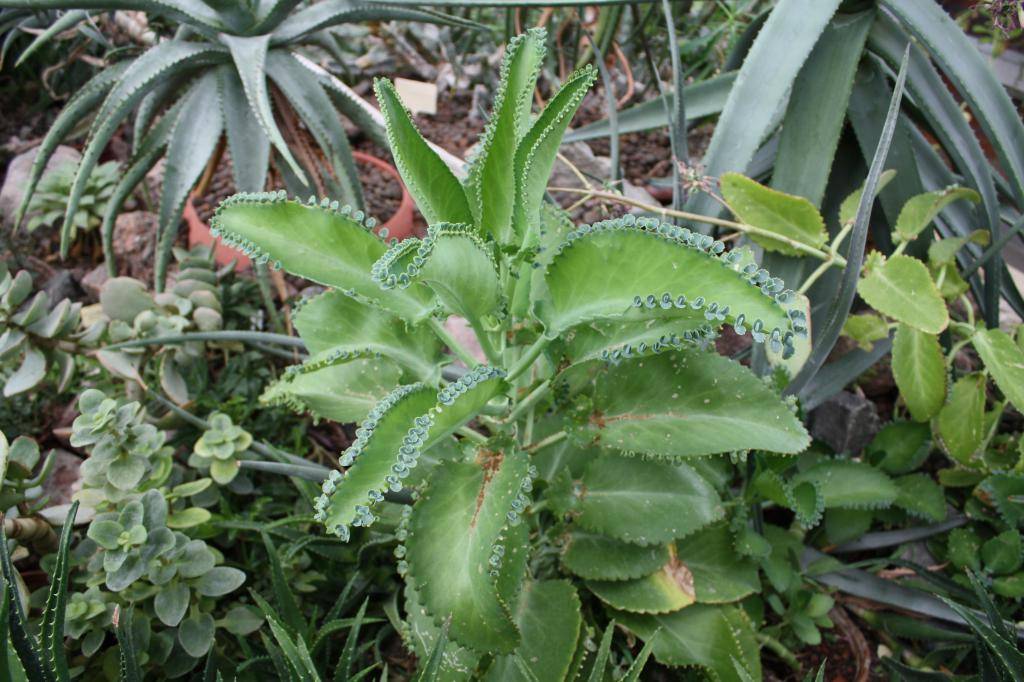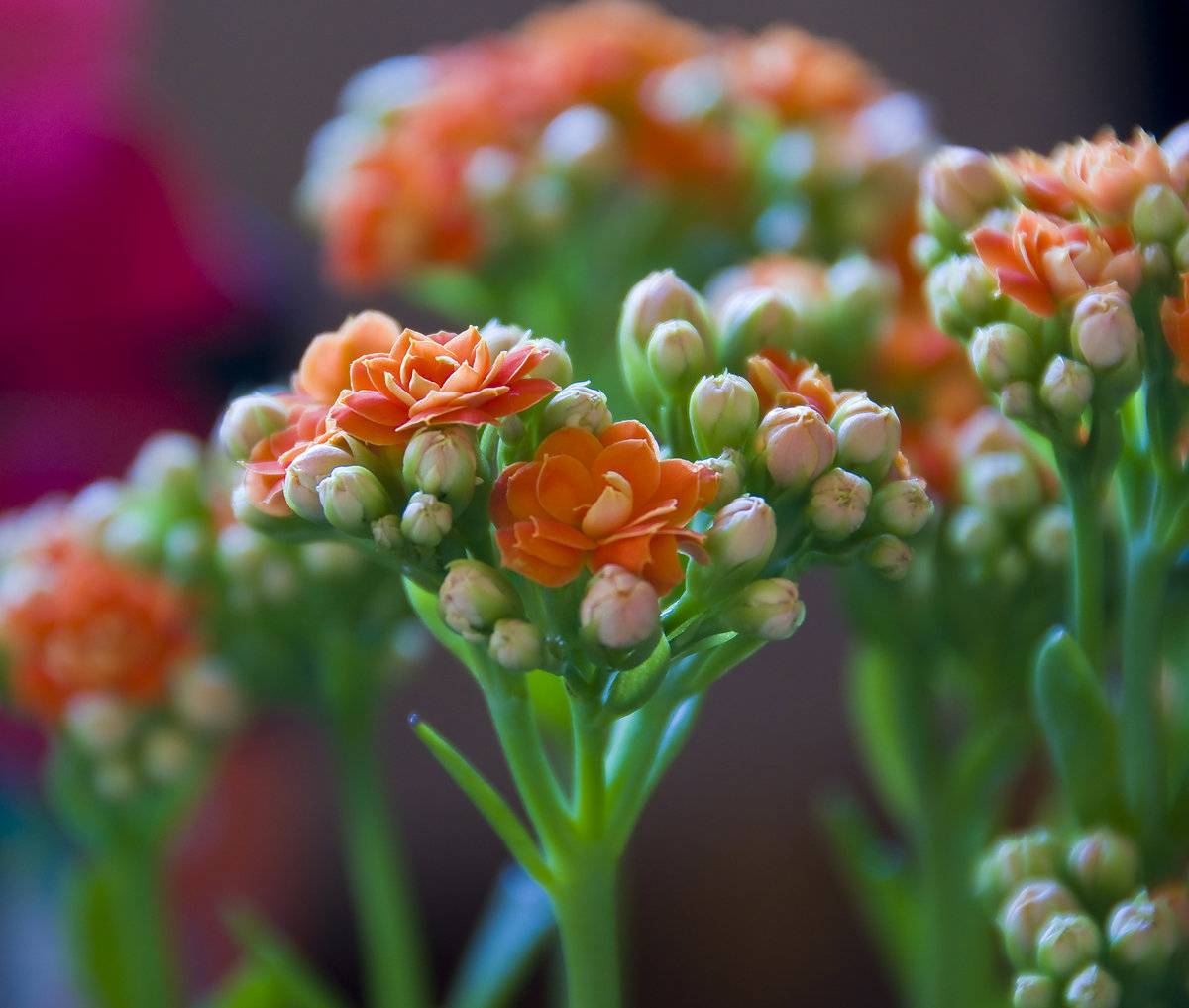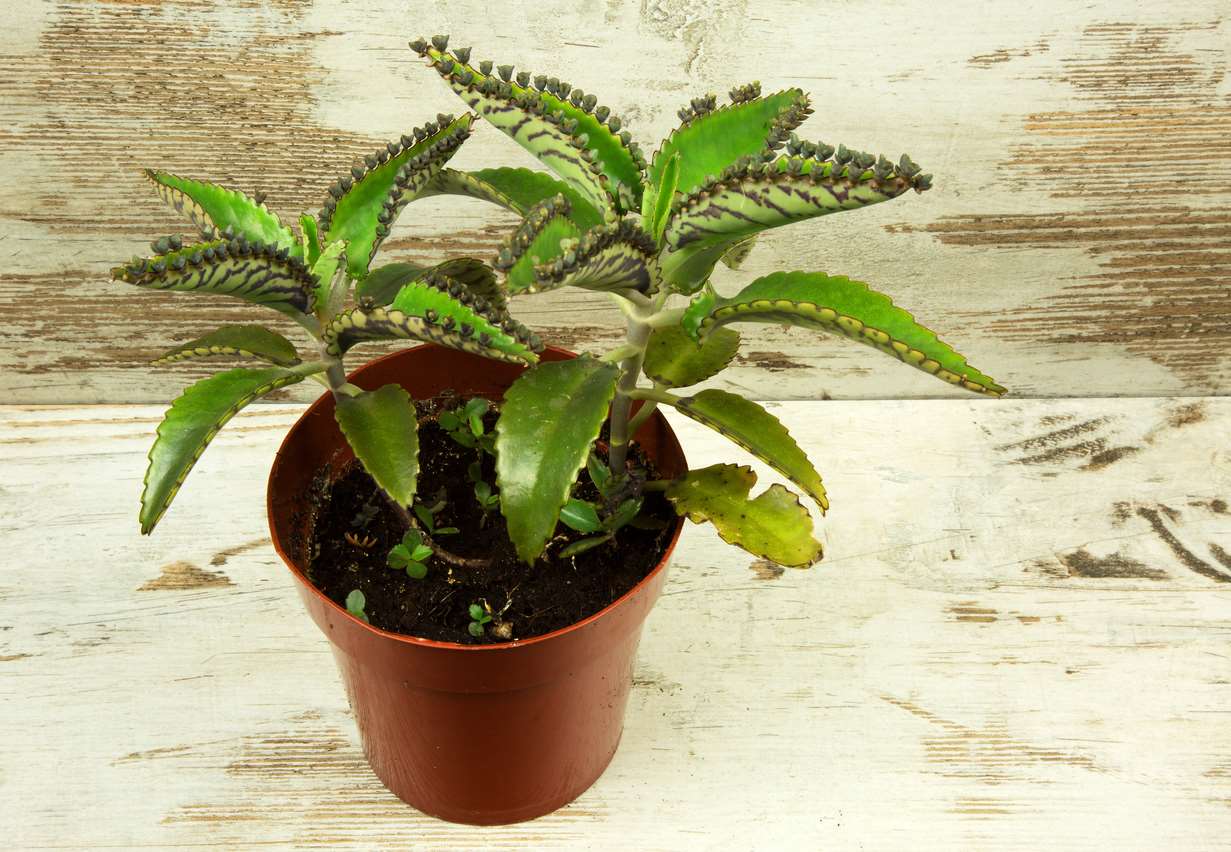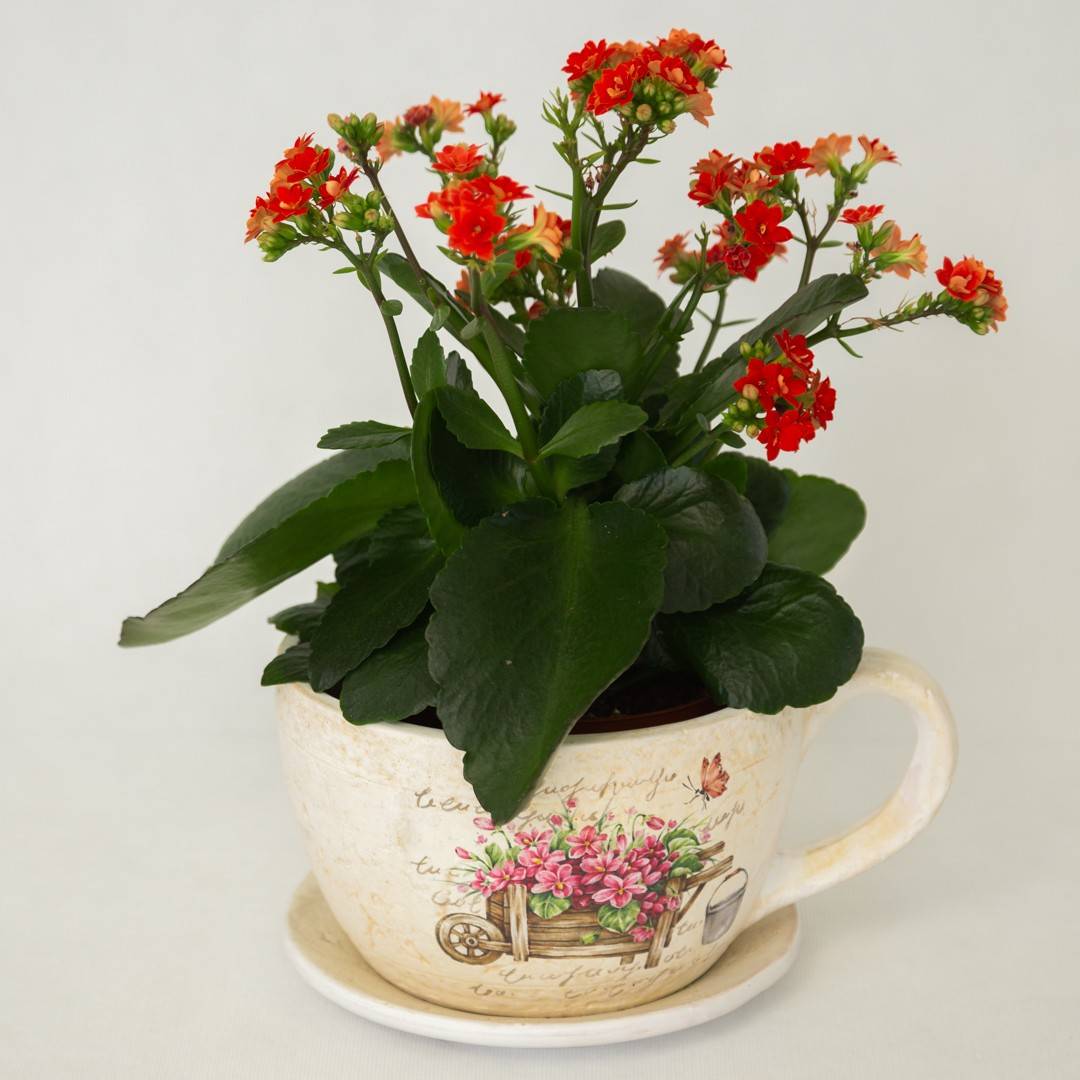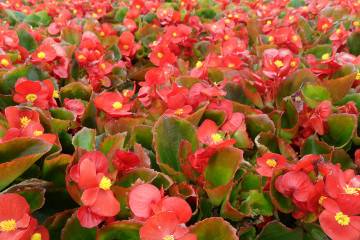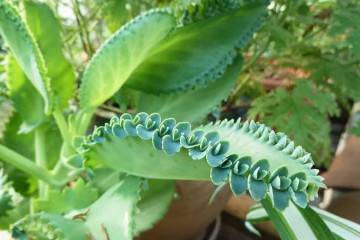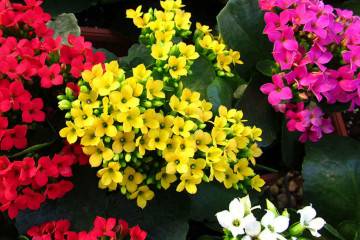How to transplant Kalanchoe - what soil and pot are needed
Content:
Kalanchoe is a perennial herbaceous evergreen plant with succulent simple succulent leaves and paniculate inflorescences of the Fat family, native to the tropical forests of South America, South Africa and South and Southeast Asia. In natural conditions, there are more than 200 species with heights ranging from a few centimeters to 4 meters.
Description of the plant
Kalanchoe is a picky, hardy houseplant. In home floriculture, its sizes are from 30 to 50 cm.The most famous types are:
- Kalanchoe Blossfeld;
- Kalanchoe Degremona;
- Kalanchoe Cirrus;
- Kalanchoe Kalandiva, artificially bred from Blossfeld's view.
Flowering Kalanchoe species have high decorative characteristics due to the bright caps of inflorescences of various shades. The time of their flowering is considered to be winter and spring. With proper care, Kalanchoe will delight with abundant flowering 5-8 months a year.
How to pick a good Kalanchoe flower in a store
To choose a healthy and viable plant in the store, you must follow the following guidelines.
Stem
During an external examination, you need to check the safety of the stem and its elasticity. Determine how firmly the plant is rooted in the substrate. If the plant stem "dangles" in the container, there is a rather high risk of hidden mechanical damage to the root system during transportation.
Leaf color
In color, the leaves and stem of the plant should have a uniform uniform color, without white bloom, brown spots and yellowed edges of the leaf plates. It is necessary to especially carefully check the condition of the lower leaves, they must be healthy, not shriveled, not darkened from excess moisture.
Inflorescences
In flowering species, it is necessary to carefully examine the inflorescences. They should contain as many closed buds and barely opened flowers as possible. The presence in the selected specimen of faded inflorescences and, especially, drying panicles, indicates that the plant has been blooming for a long time, and soon it must be prepared for a dormant period.
Substrate
It is very important to check the condition of the soil in the transport container. The earthen ball should not be too wet, and in the lower part near the holes for draining the liquid - sour. Excessive moisture and massive processing of plants in supermarket chains can harm the plant and stimulate the process of rotting of the root system, which can lead to the subsequent wilting of the plant.
It is better to choose plants with a dry earthy clod. Excessive waterlogging is more likely to kill Kalanchoe than short drying.Due to its succulent properties and the ability to accumulate liquid in the stem and in the leaves, Kalanchoe is able to withstand a short drought without serious consequences.
Kalanchoe is a short day plant. To stimulate the budding process, a short day of less than 8 hours is artificially created. To do this, cover the bush with a cap that does not allow light to pass through, or put the pot in a closet.
How to transplant Kalanchoe at home
For Kalanchoe, transplantation is one of the mandatory procedures. However, it must be carried out correctly. The plant should be transplanted in the following cases:
- Transplant after purchase - Kalanchoe is transplanted after 2 weeks, having withstood the adaptation period.
- As needed - when overflowing or decaying roots and, as a result, wilting of the flower. Or if the plant has become too crowded, and its roots are densely entwined with drainage holes at the bottom of the pot.
- Planned - with active growth in the first years of life, the plant is transplanted annually in the spring. Further, with a slowdown in growth, every 2-3 years.
Immediately after the purchase, the plant is not recommended to be transplanted by the transshipment method, since the transport soil in which the flower was in the store is not suitable for long-term use. In other cases, use the transshipment method.
If the earthen lump began to sour, then the plant should be immediately removed, the unsuitable soil should be removed and transplanted into the same pot by transferring it with a new soil mixture. This is the fastest and most effective way to save a plant from overflow and root decay.
Soil preparation
Before transplanting, it is necessary to prepare the ideal soil for the Kalanchoe. The earth should be sufficiently loose, it should be good for air and water to pass through. The ideal soil for Kalanchoe is neutral or slightly acidic.
As a soil mixture, use:
- ready-made soil for cacti and succulents;
- universal soil for indoor plants;
- garden soil with the addition of humus and sand in equal proportions.
For looseness, it is recommended to add to the composition:
- coconut substrate (fiber);
- crushed charcoal;
- sphagnum moss;
- perlite or vermiculite;
- coarse sand.
A prerequisite for preventing the stagnation of moisture in the pot is the creation of a full-fledged drainage layer 1.5-3 cm thick.
Drainage preparation
When choosing the thickness of the drainage, one should be guided by the following rule: the larger the drainage hole, the thinner the drainage layer is made; the smaller the diameter of the holes at the bottom of the pot, the thicker the drainage layer should be.
The drainage layer can be made from the following components:
- expanded clay for domestic plants - it is necessary to choose by diameter so that it does not fall out through the drainage holes;
- natural materials - gravel, crushed stone, river pebbles, ceramic chips, broken bricks).
What pot is needed for Kalanchoe
Choosing the right pot is a prerequisite for the successful cultivation of Kalanchoe. The ideal option is a simple unglazed clay pot that allows air to pass through, absorbs excess moisture and has drainage properties.
But for a picky Kalanchoe plant, any pot, including a plastic one, is suitable. It should be borne in mind that plastic containers do not allow air to pass through. To avoid root diseases, make as many drainage holes as possible in the plastic pot.
Wide and shallow pots are suitable for growing Kalanchoe. When initially choosing the size of the pot, it should be borne in mind that the root system of the Kalanchoe is small. Therefore, you should not buy a pot that is too voluminous, because moisture will accumulate in a large earthen coma, and this is detrimental to the plant. The optimal pot size is 2 times larger than the earthen lump with the plant.
With a further annual transplant, a pot with a diameter of 2-3 centimeters larger than the previous one is selected. For an adult plant over 5 years old, it is not necessary to increase the volume of the pot. It is enough to simply remove the plant, renew the drainage layer and cover with fresh potting mix.
How to transplant Kalanchoe: step by step instructions
Kalanchoe transplant is carried out as follows:
- Moisten the soil in the pot liberally so that it becomes soft and does not break the roots. Gently, holding the Kalanchoe bush, shake the pot to reduce the adhesion of the soil to the inner walls of the container.
- Carefully remove the plant along with the clod of earth, shake the earth from the clod. In the case of transplanting after purchase, it is recommended to stir the earthen ball as deep as possible, almost to the base, to the root collar and remove the caked substrate, because in the future it will interfere with the proper development of the root system and can lead to its deformation.
- Examine the visible part of the root system. If available, remove roots damaged by rot.
- Cut off the darkened and twisted lower leaves.
- Pour a little potting soil onto the previously prepared drainage layer and place a Kalanchoe bush on it.
- Fill the voids between the lump and the sides of the pot with soil, shaking the pot occasionally to fill the voids.
- Lightly compact the soil around the flower and, if necessary, add more soil.
- To prevent the overgrowth of the bush with side shoots, you can decorate the soil surface with pebbles or mulch.
- It is good to shed the plant, but then stop watering for about a week until the soil dries.
- After transplanting, place the plant in partial shade for 2-3 days and only then put it in a permanent place with good lighting.
Kalanchoe care after transplant
In the spring after transplanting, when the plant enters the active growing season, it must be properly watered, fed and pruned.
Watering
Watering is carried out, adhering to the following rules:
- Water with care. Overflow should be feared more than underfilling, since the plant is afraid of an excess of moisture, and the succulent properties allow it to survive a short drought.
- In the heat, it is necessary to spill the soil abundantly, but the water from the pallet must be drained immediately, the pallet must be dry.
- Avoid getting water on the stems and leaves, because the plant does not tolerate excess moisture and can rot.
- In summer, watering is carried out 2-3 times a week, in winter - once every 1-2 weeks. Before watering, it is recommended to first probe the earthen lump. In summer, the soil surface should have time to dry out by 1/3, in winter - by 2/3.
- Use soft warm water when watering.
- It is not recommended to spray Kalanchoe. But in conditions of extremely hot weather, spraying the air around the bush is allowed.
If water is not properly watered, brown spots and plaque form on the foliage.
Top dressing
For the successful cultivation of Kalanchoe at home, it is required to periodically feed it during the growth period, cut off faded flower stalks and observe rest periods. You can plant the plant with cuttings. It is recommended to feed with liquid fertilizers for succulents.
In summer, Kalanchoe can be taken out into the garden, on the terrace or on the balcony, and even planted with cuttings in open ground, not forgetting to shade from aggressive sunlight after planting.
Florists love the unpretentious Kalanchoe plant, which is easy to care for. Transplanting a plant is simple. Subject to the basic rules of maintenance, this indoor flower will create a favorable atmosphere in the house and will always delight its owners.
